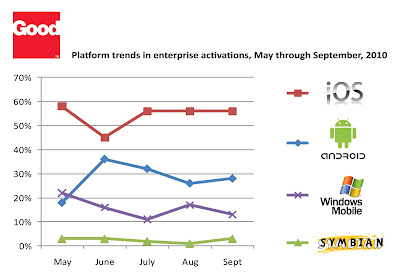Windows Phone 7: The Uphill Struggle


The champagne bottle has cracked over its bows, and the good ship Windows Phone 7 has finally set sail. It's been a hard slog to get here, with Microsoft throwing away its original mobile OS and starting from scratch and coming up with a unique approach to smartphones in just 18 months. But that was just the start, and now the real battle's beginning: the battle for market share.
Windows Phone 7's targetting is interesting, especially with its prosumer mix of social networking and work tools, with Facebook and Office. But it's Windows Mobile's old stronghold of corporate accounts that's going to be hardest to get back into - especially with the inroads that iPhone and Android have made. BlackBerry continues to rule the roost, and RIM's recent release of the free BES Express means that the old argument of just how much BES licences cost is a thing of the past.
So Microsoft needs to win against Android and iPhone. On paper that shouldn't be difficult. After all, both have made serious enterprise mis-steps. It wasn'??t until the third version of Apple's IOS that iPhone started supporting Exchange Active Sync security policies - with previous version accepting policies and not acting on them, something that could have put many companies at risk of significant data leaks. Android's also had its EAS problems. A recent update to Nexus One devices has stopped the built in EAS client from connecting to Exchange 2010 SP1 implementations, and a month after announcing that it had had a fix, Google still hasn't deployed it (and this is to their own reference devices, not to partner hardware).
With Windows Phone's secure EAS and SharePoint partnerships mandated by Microsoft's hardware requirements, it's up to Microsoft enterprise sales teams to get businesses to switch back. That's going to be harder than it seems at first. We had an interesting conversation at CTIA Enterprise a couple of weeks ago with Good's Dimitri Volkmannn, talking about how the mobile enterprise management company sees the current enterprise mobile space. As Good provides a secure, sand-boxed messaging and application platform to its users, it's got a lot of enterprise and government customers, and it's been seeing some interesting usage patterns - patterns that mean things are going to be very difficult for Windows Phone to regain lost ground.
 Device activations from May to September 2010
Device activations from May to September 2010
Currently Good is getting 50% of its activations (from in use enterprise devices) on iOS hardware. 30% are on Android, and most of the rest on a rump of government Windows Mobile deployments. There's no showing for RIM, as it and Good are direct competitors and Good's software doesn't run on BlackBerry. IOS has a very healthy market share in a short time, but Android is growing quickly and getting a larger share of the overall userbase. There is hope for Microsoft though, as companies are no longer wedded to just one device, with over 40% using Good's software on more than one platform.
Volkmann notes that a lot of new devices coming into businesses, and users are also keeping up to date with operating system updates - installing them very quickly, with the way mobile software is distributed today an incentive for users to upgrade. In fact, over 90% of Good's iOS users are already running iOS4. He also points out that Android's growth has gone through a very recent inflection point, and is growing in waves rather than spikes, as different vendors roll out different hardware. He's also seeing an increasing use of consumer technology in businesses, and many of the new generation of devices weren't designed to be strong enterprise devices.
That then is where Microsoft needs to seize its chance, if it's to sell the many millions of Windows Phone 7 devices it's been predicting. It needs to be able to say to its corporate buyers that here is a phone that's consumer friendly but that's also ready for enterprise security and for enterprise deployment.
It's going to be a hard sell, but it's one that has a ready and waiting audience.
Simon Bisson
